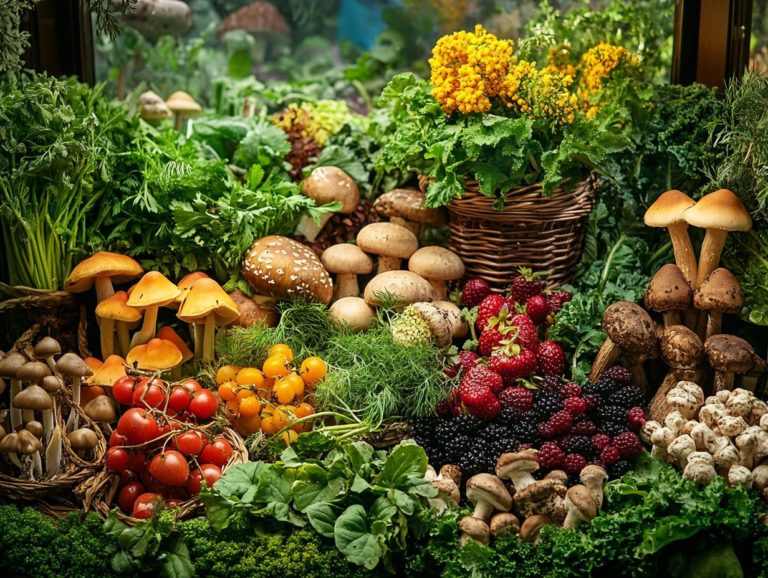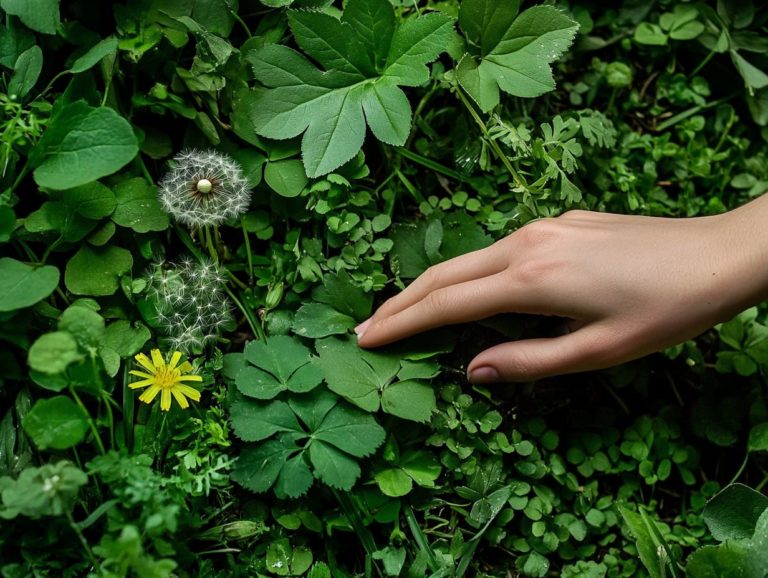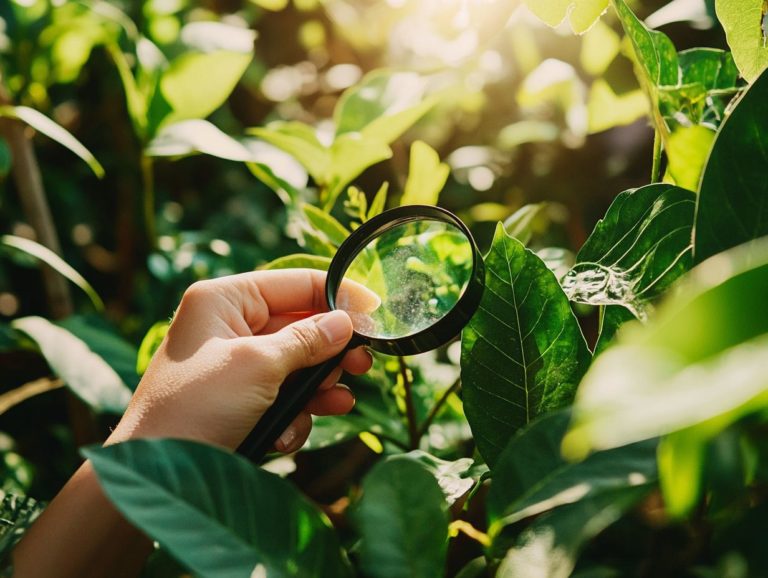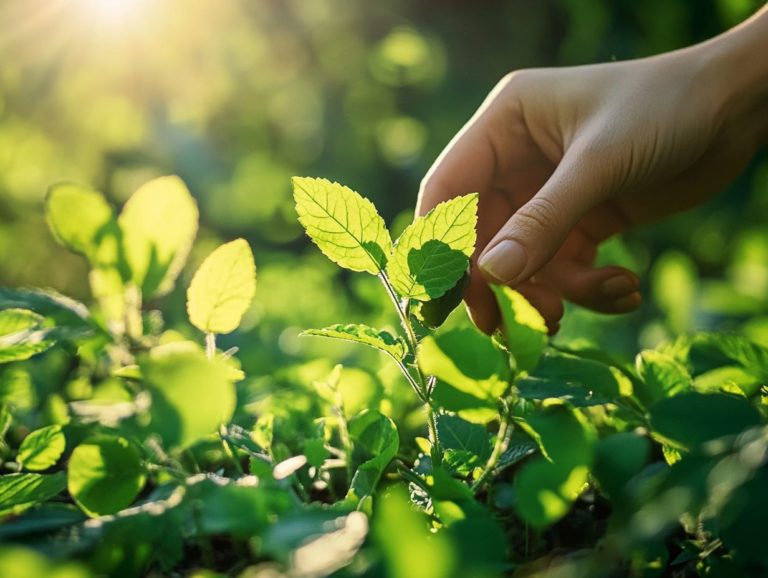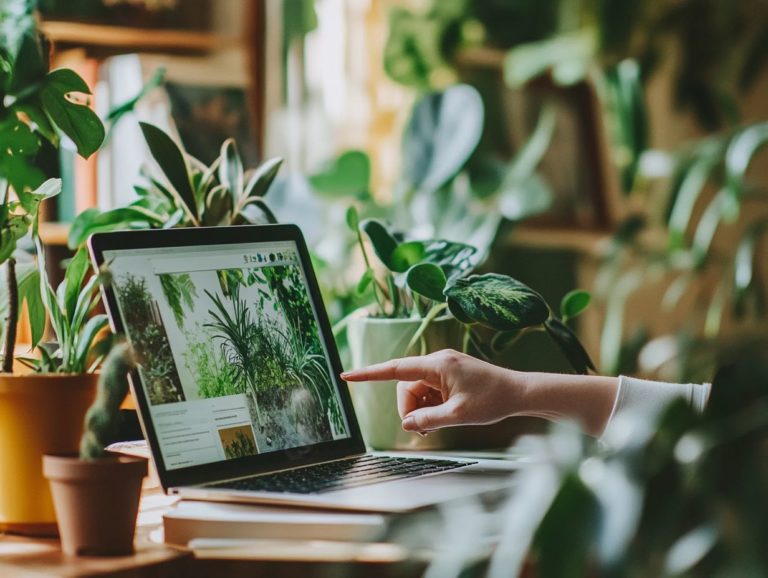Identifying Edible Plants in Urban Areas
In a world that s increasingly pivoting towards sustainability and healthier lifestyles, being able to identify edible plants can truly transform your experience.
These plants not only provide nutritional benefits but also deepen your connection to nature, even amidst the hustle and bustle of urban life. This article delves into the myriad advantages of recognizing edible flora, highlights common species you may encounter, and outlines essential precautions for safe foraging.
You will discover practical tools and techniques that will empower you to embark on your culinary adventure in the great outdoors!
Contents
- Key Takeaways:
- Benefits of Identifying Edible Plants
- Common Edible Plants in Urban Areas
- Precautions and Safety Measures
- Methods for Identifying Edible Plants
- Frequently Asked Questions
- What are edible plants and wild foods?
- How do I identify edible plants in urban areas?
- Are all plants in urban areas safe to eat?
- What are some common edible plants found in urban areas?
- Can I forage for edible plants in public or private urban spaces?
- What are some safety precautions to take when foraging for edible plants in urban areas?
Key Takeaways:
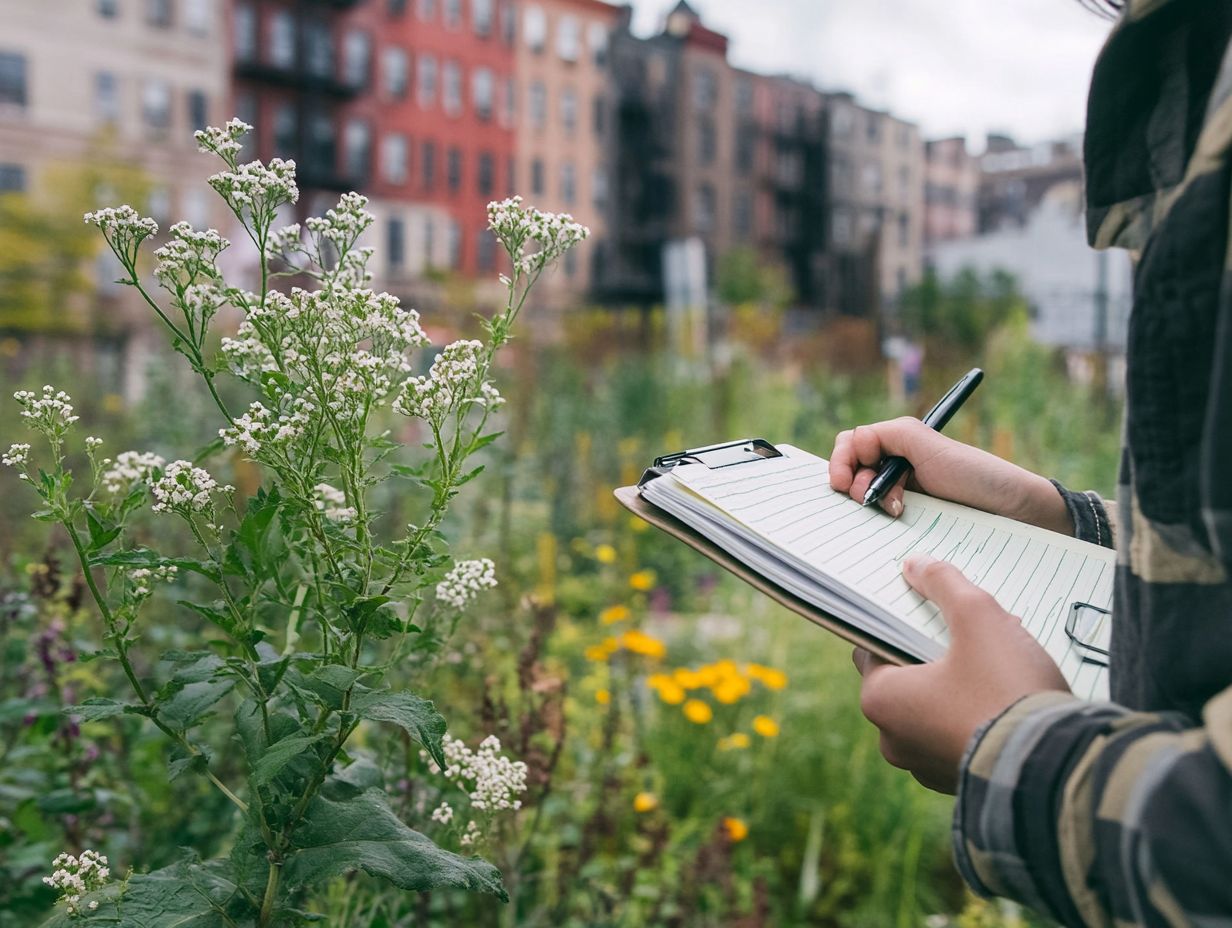
- Identifying edible plants in urban areas provides numerous nutritional and environmental benefits.
- It is important to take precautions and safety measures when foraging for edible plants to avoid potential risks.
- Various methods and tools are available for identifying edible plants, allowing for safe and sustainable foraging practices.
What are Edible Plants?
Edible plants are remarkable species nestled within urban landscapes that you can safely consume. They range from familiar weeds like dandelions and garlic mustard to delightful discoveries such as wild mint and serviceberries. For those interested in foraging, identifying edible plants in the Northeast can lead to exciting culinary adventures.
These versatile plants enrich your diet with essential vitamins and minerals and underscore the importance of urban foraging as a way to reconnect with nature. By venturing into local green spaces, you can uncover culinary gems like purslane, a nutrient-dense plant packed with omega-3 fatty acids, or elderflowers, celebrated for their immune-boosting benefits.
Engaging in foraging enhances biodiversity by fostering appreciation for native species and gives the power to communities to reclaim their food systems. This awareness cultivates food justice, enabling marginalized groups to access nutritious options while simultaneously strengthening community ties through shared knowledge and experiences.
Benefits of Identifying Edible Plants
Identifying edible plants in your urban environment presents a wealth of benefits. It promotes health through the consumption of nutrient-rich foods while enhancing your ecological awareness and local access to food. Learning about identifying wild edibles in your local area can further enrich this experience.
By engaging with the local flora, you cultivate a deeper connection to your surroundings, allowing you to forage responsibly and appreciate the environmental impact of your choices. This practice helps combat food deserts and strengthens community ties by fostering shared knowledge about sustainable practices and the rich historical context of foraging.
Nutritional and Environmental Benefits
The nutritional benefits of consuming edible plants are exceptional, providing you with essential vitamins and minerals that significantly contribute to your overall health and well-being.
By incorporating wild foods like dandelion fritters and wild berries into your diet, you enhance not only the flavor but also embrace a sustainable alternative to store-bought produce, thereby reducing your ecological footprint. This approach aligns perfectly with food justice practices, promoting local ecosystems and biodiversity while ensuring that communities have access to the health benefits that nature generously offers.
These plants often brim with antioxidants, combating oxidative stress, and many are low in calories yet high in fiber, making them ideal choices for weight management.
For instance, you can brew stinging nettles into a nutritious tea or toss purslane into salads for a delightful crunch. Foraging fosters a deeper connection to the environment, encouraging you to appreciate and respect natural habitats.
By selecting locally sourced wild edibles, you nurture your body while supporting ecological balance, emphasizing the importance of sustainable relationships with the earth’s resources.
Join the foraging movement today!
Common Edible Plants in Urban Areas
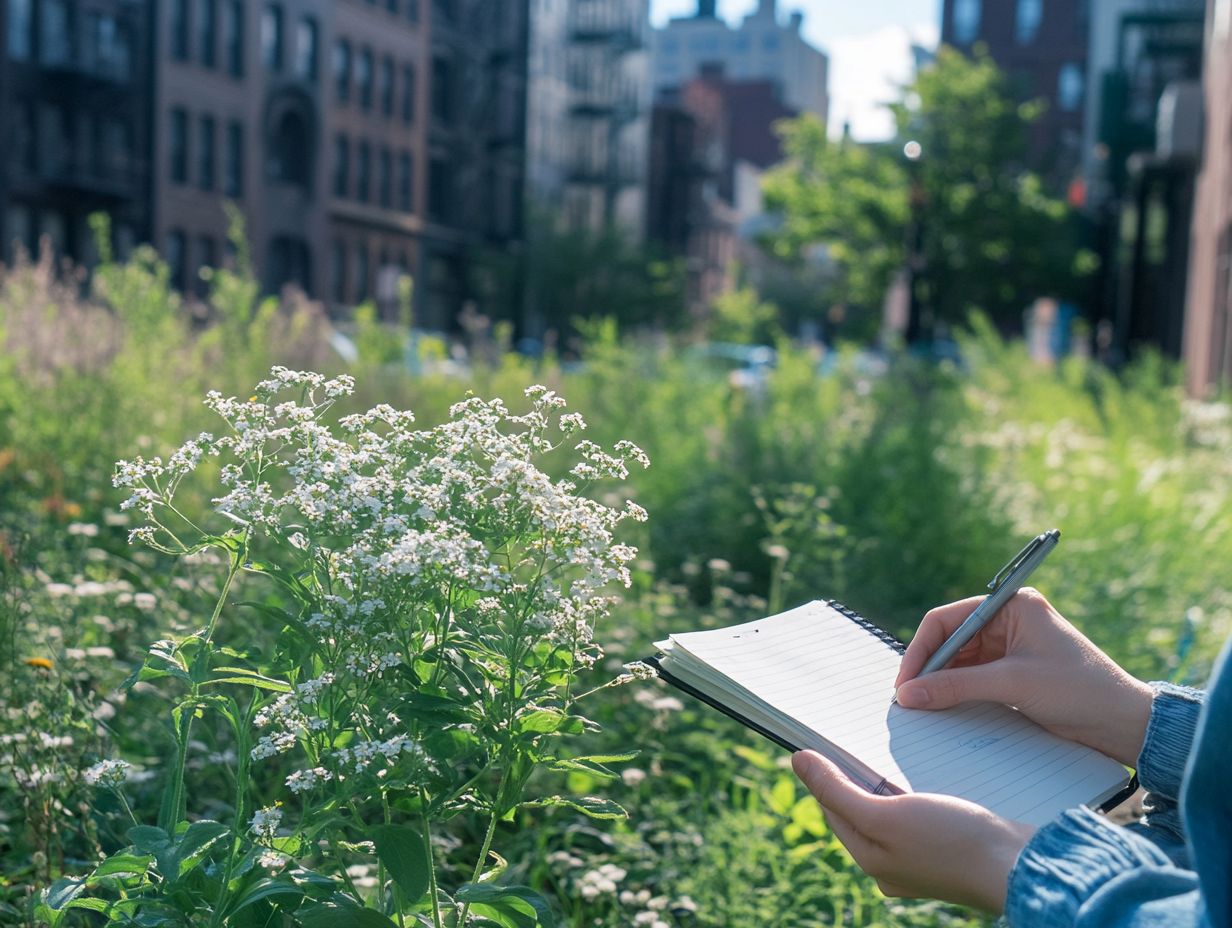
In urban areas, you can discover a remarkable array of common edible plants, offering a convenient source of nutrition for those who venture into urban foraging. For more insights on this, consider identifying wild edible plants in California. Imagine stumbling upon garlic mustard, dandelion leaves, wild mint, and serviceberries. These plants not only elevate your culinary adventures but also play essential roles in the local ecosystem.
By learning to identify these edible gems, you empower yourself to forage responsibly. This cultivates a deeper connection to your community and fosters ecological awareness. This knowledge can also be a powerful tool in addressing food insecurity and promoting food justice.
Identification and Uses
Successfully identifying edible plants requires a thoughtful blend of knowledge, practical skills, and tools. Whether you opt for foraging classes or handy apps, equipping yourself with the right resources can significantly enhance your journey.
By exploring plant identification and understanding the uses of various edible plants, you can confidently uncover culinary inspirations from refreshing wild mint tea to delightful dandelion fritters. This knowledge fosters mindfulness and strengthens your connection to the environment.
Focusing on visual characteristics like leaf shape, flower color, and growth patterns can simplify the plant identification process. Understanding the specific habitats where these plants flourish be it moist forests, sunny meadows, or coastal areas provides crucial context for your foraging adventures.
Practical tips such as knowing the best seasons for harvesting and embracing sustainable foraging practices which means taking only what you need and ensuring plants can thrive can further enhance your experience.
Utilizing tools like field guides, magnifying lenses, and mobile applications dedicated to plant identification can prove instrumental in your endeavors. Online foraging courses are excellent resources for anyone eager to expand their knowledge and skills in this rewarding and enriching practice.
Precautions and Safety Measures
Foraging for edible plants can be a rewarding activity. Always take precautions to stay safe and enjoy your foraging adventure.
Familiarizing yourself with foraging regulations, honing your skills in distinguishing safe plants from toxic ones, and embracing ethical foraging practices are crucial for a fulfilling experience.
By following these guidelines, you can revel in the sensory joys of exploring local flora while safeguarding your health and well-being.
Potential Risks and How to Avoid Them
Engaging in urban foraging presents certain risks, especially the chance of mistaking toxic plants for their edible counterparts. By sharpening your plant identification skills and being aware of common health hazards, you can forage with confidence, especially with resources like wild edibles in your backyard.
Familiarizing yourself with local guidelines and learning from experienced foragers will empower you to savor the benefits of wild foods while adhering to food safety standards.
Be acutely aware of the potential for misidentification, as it can lead to health issues ranging from mild stomach upset to life-threatening conditions. To minimize these risks, rely on reputable field guides and consider attending local foraging workshops they can be invaluable. Maintaining a healthy skepticism about unfamiliar plants is a prudent strategy.
Always begin by sampling small amounts of any new edible. Individual reactions can vary significantly. Staying informed about local flora and understanding the ecological impact of foraging will enhance your experience, making it both sustainable and enjoyable.
Start your foraging journey safely and responsibly!
Methods for Identifying Edible Plants
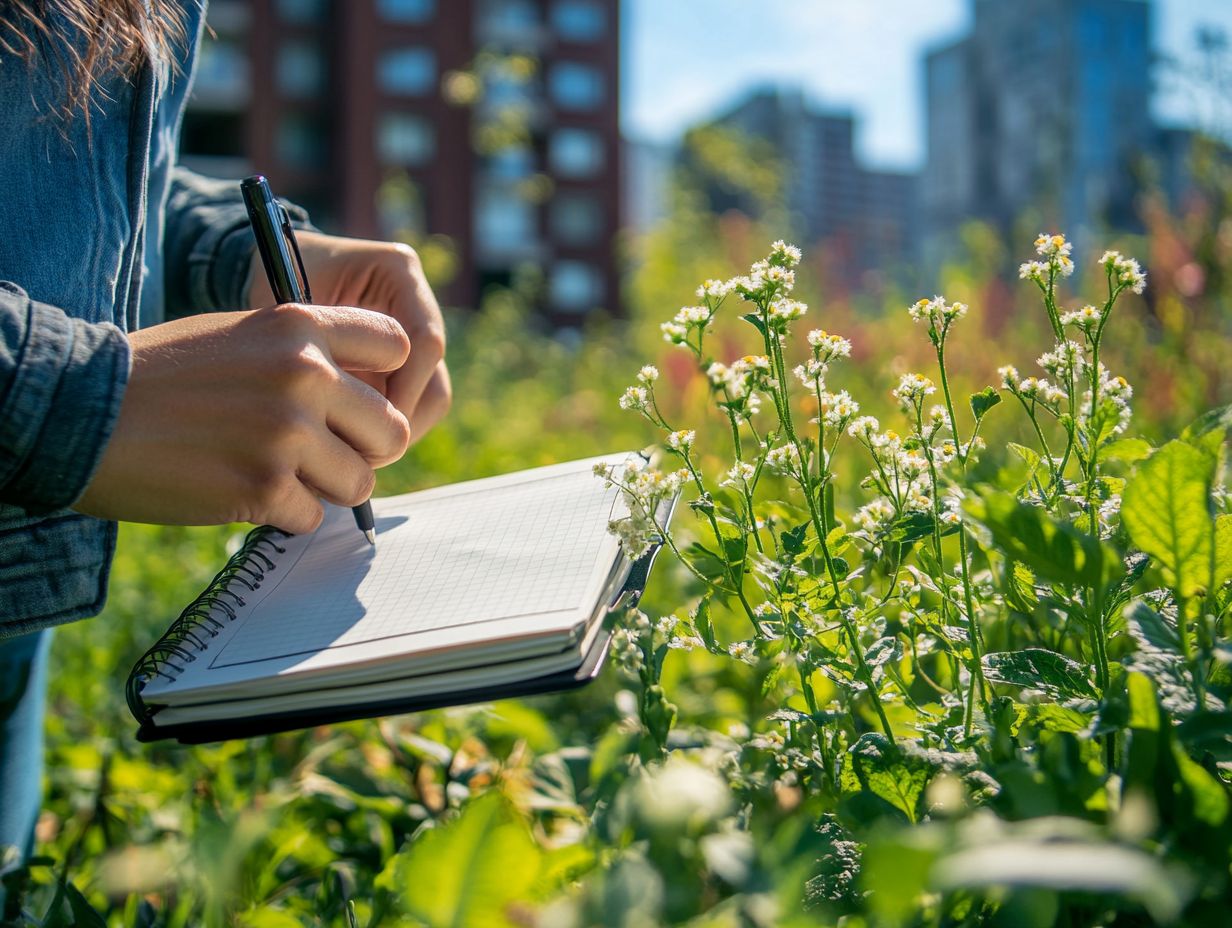
Identifying edible plants demands a careful plan, utilizing an array of methods, tools, and resources to ensure accurate identification and your safety during urban foraging. For those new to this practice, understanding the basics of foraging is crucial for a successful experience.
By using foraging tools like field guides and foraging apps, and participating in mushroom identification activities, you can deepen your understanding of local flora. You can unearth the edible treasures nestled within your urban environment.
These strategies enrich your connection to nature and encourage responsible foraging practices that align with sustainability principles.
Tools and Techniques for Identification
Utilizing the right foraging tools and techniques is essential for anyone interested in accurately and responsibly identifying edible plants. Resources such as field guides, foraging apps, and classes offer invaluable insights into plant identification and the nutritional benefits of various wild foods.
Developing keen observation skills is crucial. It gives you the power to navigate urban landscapes confidently and uncover the rich array of edible plants right at your doorstep.
By harnessing the latest technology like plant identification apps you can significantly enhance your ability to recognize different species and their characteristics in real time during outdoor excursions.
Engaging in online forums and community groups creates a supportive environment for sharing experiences and local knowledge.
Imagine this: you embark on a weekend hike, armed with an app to uncover edible mushrooms or greens, and return with a basket brimming with nutritious finds. These practical foraging techniques elevate your cooking skills and encourage sustainable harvesting practices, inviting you to take ownership of your natural environment.
Frequently Asked Questions
What are edible plants and wild foods?
Edible plants are those that can be safely consumed by humans as food. These plants provide nutrients and sustenance and are found in many different environments, including urban areas.
How do I identify edible plants in urban areas?
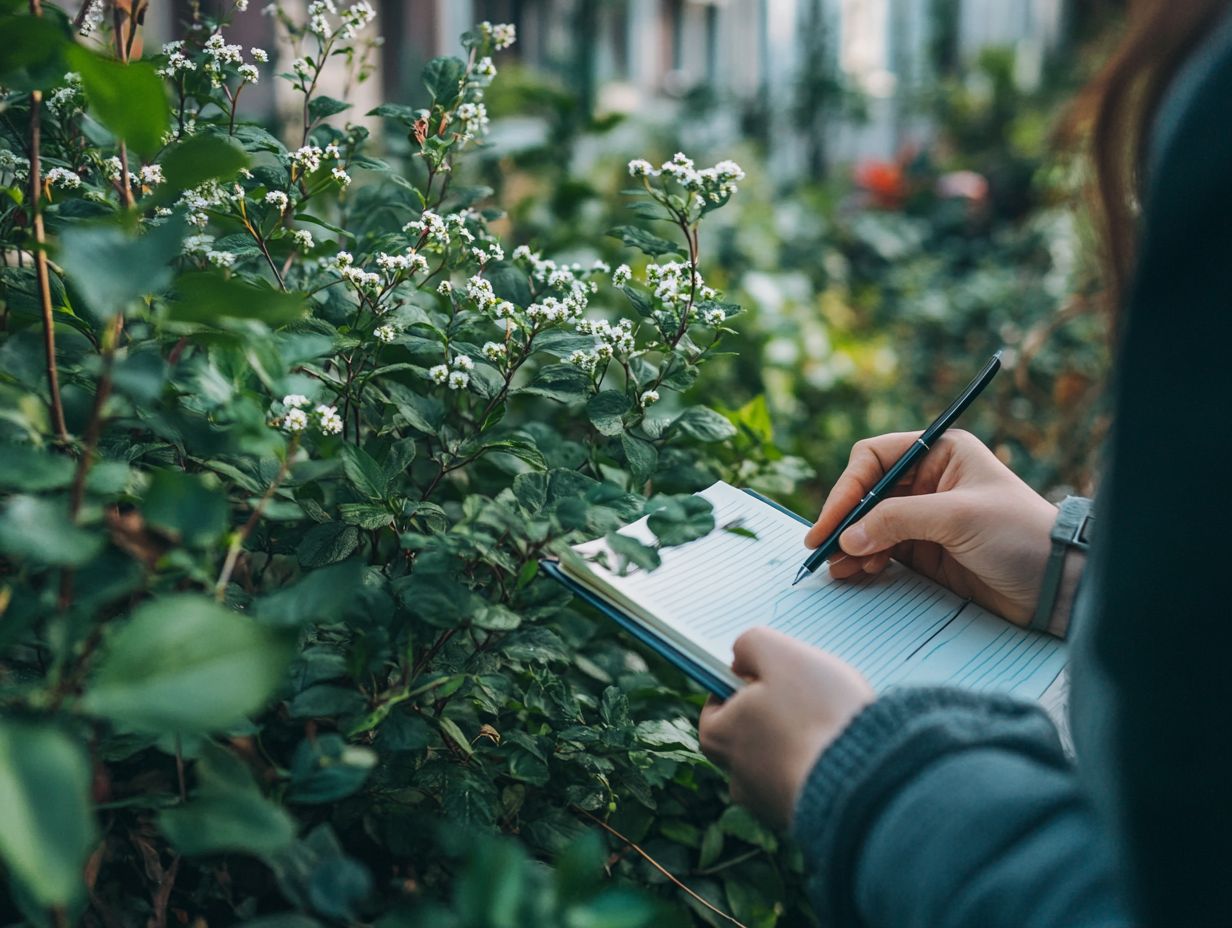
There are various methods for identifying edible plants in your region in urban areas. You can research specific plants and their characteristics, take classes or workshops on foraging, or consult with experienced foragers or local experts.
Are all plants in urban areas safe to eat?
No, not all plants in urban areas are safe to eat. It is important to properly identify plants before consuming them, as some may be poisonous or have harmful side effects. For guidance, refer to identifying safe edibles and always err on the side of caution by only consuming plants that you are certain are safe.
What are some common edible plants found in urban areas?
Some common edible plants found in urban areas include:
- Dandelion
- Chickweed
- Plantain
- Purslane
- Wild garlic
However, different regions may have different edible plants. It’s important to do thorough research for your specific area.
Can I forage for edible plants in public or private urban spaces?
Foraging for edible plants in public or private urban spaces is not always allowed. Check local laws and regulations before foraging in any area. To enhance your foraging knowledge, refer to Wild Edibles: A Safe Forager’s Guide to Identification. Practice ethical foraging and only take what you need, leaving enough for the plants to continue growing and providing for wildlife. This fosters a sense of community connection.
What are some safety precautions to take when foraging for edible plants in urban areas?
When foraging for edible plants in urban areas, it is important to:
- Wear proper clothing and protection, such as gloves and long sleeves.
- Properly wash and prepare any plants before consuming them.
- Be mindful of potential environmental hazards, such as pollution or pesticides.
Ready to discover delicious plants in your neighborhood? Let’s get started!
In summary, urban foraging offers an exciting way to connect with nature. By using the right tools and techniques, you can identify safe, edible plants while practicing sustainable harvesting methods that benefit local ecosystems.


